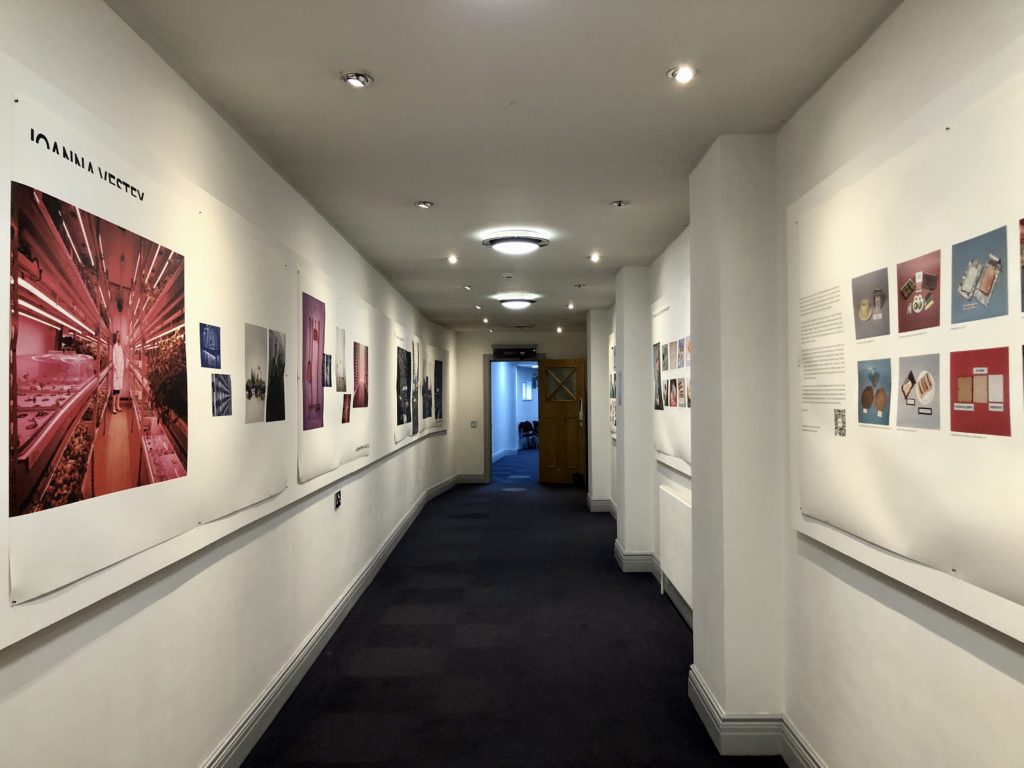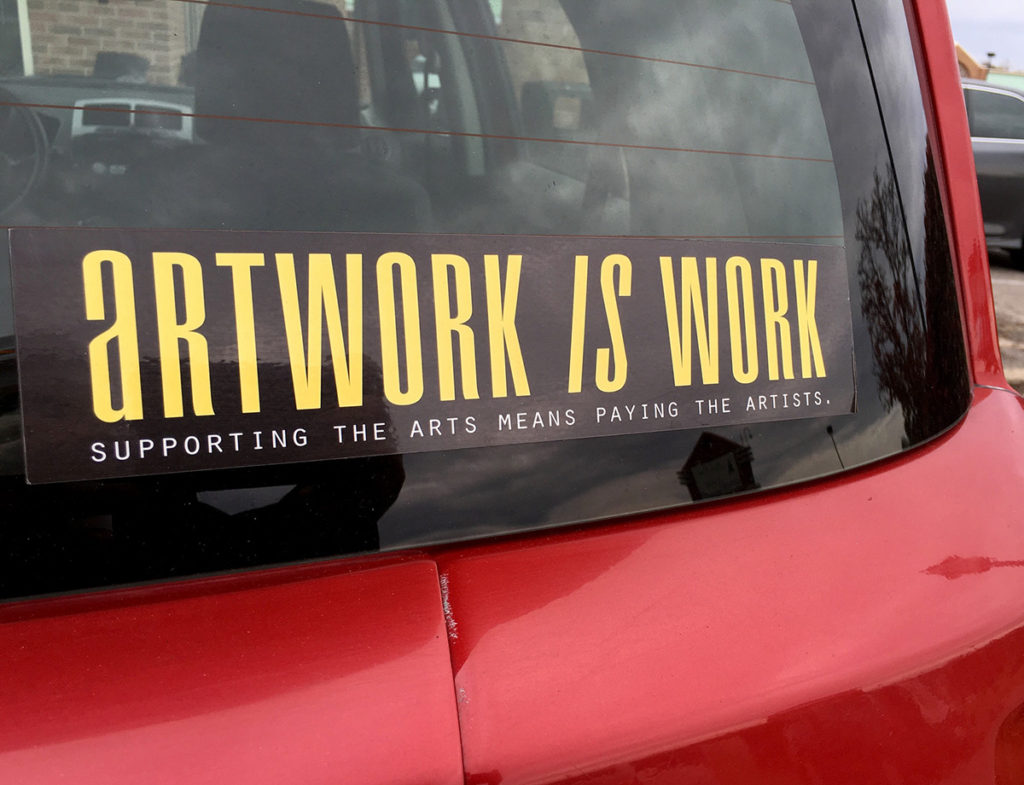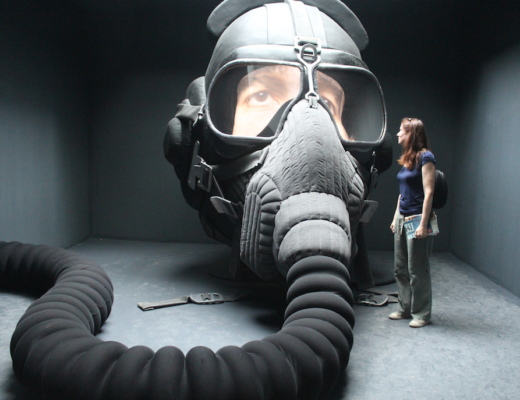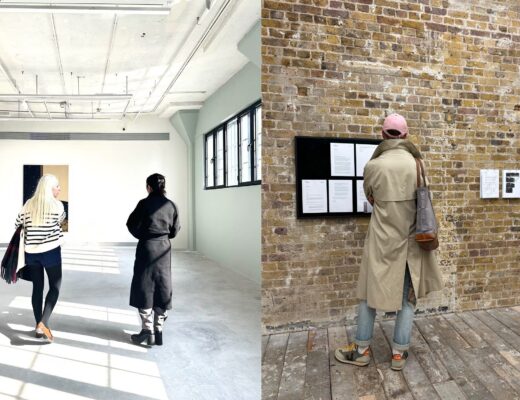TOM: It’s time to talk about money.
CRYSTAL: Oh yes! We’ve wanted to have a conversation around paying artists for a while, but my recent experiences with Format photography festival tipped it. As we were discussing these issues, industria’s Structurally F-cked report came out in March and so this conversation felt like a good opportunity to tie these things together.
It’s worth saying that these problems are not new. I often have conversations about this, in person, on social media, sometimes in public, but I could probably publish my own report of the bad experiences I’ve had with institutions. When you work alone all of the time, it’s easy to get it into your head that it’s you who is the problem, your lack of experience or lack of knowledge. But when you speak to others, and when you read reports like Structurally F-cked, what becomes clear is that maltreatment of artists is intrinsic to the industry. Nevertheless, I do think it’s important as individuals to be transparent about our experiences because sharing knowledge can be empowering on multiple levels.
TOM: By coincidence, just before we started talking, I received another report – an art market salary report published by international arts recruitment agency Sophie Macpherson. When you compare it to Structurally F-cked, it’s just hilarious – albeit also incredibly depressing.
CRYSTAL: We can come back to these reports and their structural implications, but let’s start with some of our own experiences.
TOM: So primarily this is a conversation about the exploitation of visual artists, but as a freelance writer there are similarities in terms of low pay, precarity, negotiation as an individual with full-time salaried staff, and widely varying rates depending on who you’re working for – whether it’s a magazine, commercial art gallery, artist-run project, public institution etc – and also the nature of the project, the amount of creative freedom it entails…
CRYSTAL: There is definitely an element of individual discretion when it comes to working at a lower rate for certain organisations, like a small artist-run project for example which is not the same as a big art institution or festival. Considering that the arts councils are now actively promoting proper remuneration for artists, it massively winds me up when institutions receiving public money are still not paying artists properly.
TOM: So many organisations seem to see themselves as special cases and that their own particular financial struggles somehow exempt them from basic standards of ethical behaviour.
CRYSTAL: I encounter this attitude more often than I would like. With Format, they gave off exactly this impression: we are a special case because we are experiencing significant financial hardship. It’s this idea that the survival of the festival is the most important factor, regardless of who gets exploited in the process. It’s especially enervating given that they are extracting money from the same artists that they purport to support.
TOM: 100%
CRYSTAL: A disclaimer: I’m not singling out Format because they are particularly egregious, but because they are high profile in the photography world and because I tried to resolve these problems directly with them and didn’t get anywhere. In fact, they did exactly what is mentioned in the SF report – they fell back on the vague idea that they will address the problems at some future date.
TOM: Overlooking the fact that they’ve had years to address these issues but somehow only feel the need to think about them properly when directly criticised.
CRYSTAL: In terms of my specific experience, the first problem is foundational. And that’s the open call competition structure which is pay-to-enter. I don’t know exactly how or why it happened, but pay-to-enter competitions or open calls for books, exhibitions, festivals and residencies have become the default in the photography world. I can’t really think of an analogous culture in the art world, except maybe paid-for residencies, but it must exist to a certain extent?
TOM: Submitting to the RA Summer Show costs £38 per work (unless you’re an RA) and they have a total cap of 16,500 entries, which works out at an income of £627,000!
CRYSTAL: Holy christ!
TOM: Bloomberg New Contemporaries charges £25. Something called Young Masters charges £38 for up to two works and is judged by a bunch of people I’ve never heard of.
CRYSTAL: On the subject of judging, just as a quick aside, I was invited to judge some big photography awards thing in the U.S. a few weeks ago. In exchange for judging 500 entries, they genuinely offered to pay me with exposure and a certificate of participation! I refused on grounds of not working for free and not endorsing pay-to-enter competitions…
TOM: What is wrong with these people?
CRYSTAL: It’s ridiculous and deeply frustrating. I’m comparatively new to this particular subsection of the art world. To me, these practices feel shocking and exploitative, but they seem standard and entrenched. Until these things change, I’m not taking part in these kinds of submission processes any more.
TOM: So tell us about Format.
CRYSTAL: It went from bad to worse pretty quickly, but to summarise: firstly, the £20 pay-to-enter open call. After eventually being selected, I noticed that the contract included a small production budget of £350 but no artist fee and brought this up with the curator and festival director. In a zoom meeting, I said that I wouldn’t participate without at least a nominal artist fee of £100 which should also be paid to all the other open call artists. This was early December 2022 (the festival was in March 2023). Format disappeared for a while and then sent an email late January with “news”. The email’s subtext was money trouble. Instead of the installations promised, Format had decided to cancel and reissue our existing contracts with a new plan to print everyone’s work on two uniform display panels of 2m x 1m and pay only an “honorarium” of £100.
Instead of an apology, the email said the team understood that “this news may be a surprise at this stage of planning” and talked about Format’s commitment to supporting artists. “We are thrilled to be able to continue exhibiting your work as part of Format23”. It might still have been maybe a little bit salvageable, but when I turned up to the opening weekend of the festival, I found that my two display panels were actually just two printed rolls of paper, hung up in a walkway corridor of a Derby University building with bulldog clips. I was angry, but also mortified at the thought of anyone seeing my work presented like this.
I wrote to the director and curators after I returned home, outlining my criticisms and concerns. The director wrote back a few weeks later to suggest a zoom meeting where he could address my concerns directly. Frankly, by that point I’d had enough and wasn’t willing to give up another hour of my time for a video call. So, I’ve had an apology, but no more.



TOM: So if they had nearly 1,000 submissions at £20 each, they made about £20,000 just from the open call process. Where does this money go? Is that paying a curator’s annual salary, or taking money from photographers lower down the chain and funnelling up to pay the bigger names at the top?
CRYSTAL: This was among the questions I put to the director but didn’t get an answer to. I mean, they probably spent less than 20% of that £20,000 (again, money raised directly from artists) on the open call exhibition, so the money must have been put towards other festival costs.
TOM: Given everything you’ve said, can you talk through your personal thought processes in terms of deciding to remain involved in the festival?
CRYSTAL: Ugh, it’s one of those classic things when you do something against your nature and then feel irritated with yourself for making bad decisions. I almost pulled out twice. The first time—around the question of the fee—I stayed with it because almost everyone else who had been selected were artists whose work I rated very highly. I was super happy to be in this company of good artists making interesting work. I wanted to show solidarity with the other artists in the programme and, because I am happy to be a bit of a pain in the ass when needed, I also wanted to push the director on paying a fee to everyone involved.
And then during the opening weekend, when I saw how shoddy the installation was, I wanted to rip it all down and take my name off of the programme. But I’d been emailed by a photo editor at the Financial Times that they were planning to run a feature about my work, and that the festival was a useful topical hook upon which to hang the feature. So I didn’t want to jeopardise that.
TOM: And after the festival, how did your conversations with Format develop?
CRYSTAL: I wrote to them after the opening weekend. I stressed my frustration and disappointment with their lack of transparency and consideration to the open call artists at nearly every stage of the production process, as well as with their public-facing declarations of commitment to supporting artists while doing the opposite behind the scenes. I asked questions about the allocations of money raised from the pay-to-enter platform and made the point that Format is benefitting from the visibility, networks and funds of the very artists it claims to support rather than the other way around. Basically, I put it to them that the survival of the festival cannot be more important than the treatment of the artists whose work enables the festival to exist.
I appreciate that it’s easier to say this than to actually manage an organisation with all its related financial problems, but by way of a contrasting positive example, take the Edinburgh Art Festival. I also entered an open call exhibition competition for the EAF. There was no entry fee. After being selected, I received a contract including a decent production budget of £1,500 and artist fee, also of £1,500. When I went to sign the contract, I noticed that the dates of our exhibition were about a week shorter than the traditional month-long dates of the festival. It turned out that the new festival director, Kim McAleese, had decided to reduce the dates of the event by one week in order to have more money to spread around. This is what responsible budget management looks like. If you have limited funds, you cannot do everything. Something has to give. In the case of the EAF, they decided to give up time. In the case of Format, they decided to give up production values and paying artists. Presuming that they knew how tight their budget was when selecting artists for the open call, they could have chosen 10 instead of 26 and perhaps done things better.
TOM: This links back to the Structurally F-cked report and the idea that if each organisation thinks of itself as exceptional, nothing changes.
CRYSTAL: Exactly. I think a lot of artists are sympathetic to the financial difficulties faced by institutions, but institutional budgets cannot be balanced by pushing wage depression onto artists, especially not when institutional staff are salaried or at least being paid minimum wage. If you look at the earnings for artists outlined in the Structurally F-cked report, it’s something like less than £2 an hour.
I think this is where transparency becomes so crucial. I really liked that in the report’s recommendations section, there was a call for institutional staff to publicly make the case for more funding and transparency. The origin of the SF report was a freedom of information request to the Tate for artist payment structures which the Tate refused on the grounds of it being commercially-sensitive information. I mean, that says everything, doesn’t it, about the institution’s priorities with respect to ensuring that artists—the very folks who enable their existence—are paid a living wage.
TOM: Your point about transparency feels important, especially how it relates to agency. It reminds me of a writing commission I took on a couple of years ago. I was approached by a small publicly funded organisation, affiliated with a university, who had a vague idea of what they wanted and asked me to propose a fee for the work. This is itself an act of outsourcing that I would urge organisations not to do. Just tell us what the budget is from the beginning so we don’t waste our time trying to second guess you!
After a fair amount of back and forth (more unpaid labour), the commission and fee were agreed and the other three writers announced. Art being a small world, we all knew each other and over the course of a few friendly emails, the subject of our fees came up by chance and it turned out we were all being paid differently for essentially the same work. There followed a chain of aggravating emails as the organisation first hid behind spurious ideas around confidentiality and GDPR, then continued to reiterate that their process was legally compliant and “normal” before eventually agreeing to pay us all equally and to ensure they do things differently in the future. It involved a lot of wasted – and unpaid – time for all of the writers. Institutional staff seem to forget that every email, every conversation, every opportunity for “dialogue” is time that they are being paid for and we are not. But I do feel like because some transparency did emerge (even if it was by chance) and because we stuck together as a group, we were able to effect some small positive change.
CRYSTAL: Institutions constantly deny mal intent and yet their actions so often run counter to these claims. Transparency equips you to navigate contracts or take a stand on issues that matter to you when dealing with institutional structures. It’s not a solution in and of itself, but it helps. In talking about my problems with Format on Instagram, I was surprised how many people privately shared stories with me about bad dealings with Format and other organisations.
TOM: I’m not going to urge individual artists and other precarious cultural workers to be open about their bad experiences because I know that such openness can come with serious repercussions. But it can be frustrating when somebody does go public and then everyone quietly says, “oh yeah I had that experience too”. Part of me is always like, why didn’t you say something!

CRYSTAL: Unfortunately, yes. And that’s why we keep having to have these conversations on transparency and paying artists and badly-behaved institutions every couple of years. That’s why we keep seeing reports like Structurally F-cked. Institutions have a hell of a lot of work to do, but artists also have some work to do to challenge the status quo of performing successful careers in public. We still need people willing to publicly expose the shameful economic realities of (trying to) make a living in this industry.
TOM: Yes, and I agree with the point you mentioned a minute ago from Structurally F-cked – that it should not just be down to freelance artists to advocate for better pay in public. Institutional staff need to be doing this too.
Before we move on, just one last thing on “transparency”. It’s obviously a buzzword in lots of fields, but it was interesting to see the term used prominently in the Sophie Macpherson Art Market salary report (click here if you want to be really depressed). Partly, this is a result of the New York pay transparency law that came into effect in 2022, but the report also argues that this kind of openness is broadly a good thing, and that the onus is on organisations to be transparent. The main point I took from the report is the massive discrepancy between the figures in this sector of the art world – auction houses, art fairs, high-end commercial galleries, and the big-shot artists whose work is almost invariably dreadful – and the precarious existence of the artists surveyed for Structurally F-cked.
At one end, artists are routinely paid as little as £1.56 per hour for their labour. At the other, studio directors for big name artists are earning £150K a year, senior sales directors for commercial galleries are on £250K, and experienced PRs can be on £100K+. These art worlds are completely separate and yet constantly overlapping, the exclusive top end teetering grandly upon the barely paid labour of all those precarious workers it continually grinds into the dust.
CRYSTAL: How very cheering.
TOM: Haha yeah sorry.
CRYSTAL: But really those figures are representative of a teeny slice of the contemporary art world. A highly visible corner where artists work more like hedge funders, but still, teeny.
TOM: One last thing that struck me about the Structurally F-cked report was how well the system works for those few at the top. So in the case of an artist represented by, say, Gagosian, it’s probably no bother to be paid very little for a big institutional show because your gallery is probably covering the costs, the market value of your work goes up etc. That means there is an assumption taking place – that remuneration, if not coming from the institution directly, is deferred somewhere along the art world chain. In some cases it is, but in many it isn’t. It reminds me of literary festivals, where often authors aren’t paid because it’s assumed the publisher will cover your costs as part of their marketing budget. That’s cool for authors with mega deals from Big Five publishers, but to expect indie presses to cover those costs or even the authors themselves, it’s a joke. That’s just one example. In both worlds – art and publishing – the whole thing is weighted in favour of those who already have all the advantages. If the finances, and therefore the associated decision-making, are all being handed over to the big publishers or commercial galleries, then they have ultimate control of who gets to take part.
CRYSTAL: Exactly. And these gate-keeping measures tied to the economies of the artworld/s perpetuate existing structures of inequalities. Imagine if an artist was paid (at least) an hourly minimum wage for the actual work done to produce, say, a large commission at a public institution like the Tate instead of a lump sum like £3,000. It would be transformative. And, of course, there will be huge resistance: we haven’t got that kind of money, etc. etc. But why is there always that kind of money for capital projects? Don’t answer that. It’s a rhetorical question.
TOM: I think we probably need to do a whole separate conversation on why the world is awash with cash for pointless capital projects while museums and universities won’t even pay their cleaners properly.
CRYSTAL: In connection to being more transparent, there are other things we can do. There was a Guardian piece recently where author Daisy Lafarge wrote about how she didn’t want a six-figure book deal, but rent controls and Universal Basic Income. I think artists sometimes forget about these bigger things we can fight for because we get tunnel-visioned into the logics of competition that institutions set up for us. We suppress transparency and don’t realise that we basically end up screwing ourselves for temporary, short-term individual gain and we all end up losing out. There are big-picture things we can do like join an artists union, get involved in lobbying for affordable studios or rent control or UBI or higher minimum wage or whatever.
TOM: And it can be small things. From my experiences, sharing existing resources with institutions can really help them to argue for paying artists properly because they are leaning on bodies of research when they make their own funding applications. a-n’s guidance on artist fees and day rates is really useful. The Uncultured’s Freelance Supporters Menu is invaluable too.
CRYSTAL: For a recent contract with a big public museum in Copenhagen, I looked at that a-n Paying Artists document as well as the MU Swedish “participation and exhibition remuneration agreement”—these kinds of documents are useful as things to point to to justify being paid a proper fee. It’s also useful to ask other artists what they charged and whether they thought that had been fairly paid. The successful funding application library on White Pube is another great resource. You can see how much people included for their fee in various successful grant applications.
TOM: I remember discussions on these questions when we were living in Finland. In 2015, an excellent book was published entitled Art Workers: Material Conditions and Labour Struggles in Contemporary Art Practice, which highlighted many of the same issues as Structurally F-cked but with an emphasis on Finland, Sweden and Estonia. (It’s out of print now but I have a PDF somewhere if anyone wants it). I always come back to something artist Jussi Kivi wrote in that book about non-payment for art work: “There is some kind of idea that the artist, after all, is not working.”
CRYSTAL: Yes it’s that old cliche that we’re not in art for the money. It isn’t helped by the sense that as an artist you’re either a superstar or poor, rather than somewhere in the middle, making enough to live on. But at the end of the day, artist is what I write on my tax return. It’s my job. Art work is work.
Image credits (from top)
1. Installation images of Format open call exhibition, photo Crystal Bennes
2. Artwork is work, photo Scott Beale via Laughing Squid




